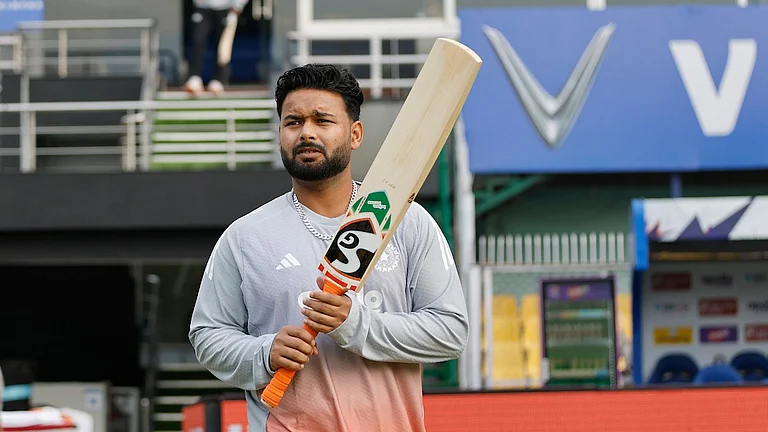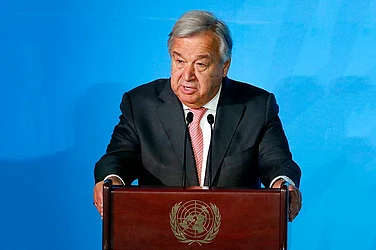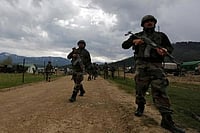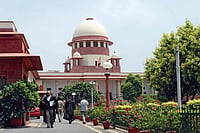The Israeli military was on Tuesday fighting fierce battles with Hamas in the northern part of the Gaza Strip.
Instead of a full-fledged military invasion of Gaza, the Israeli military is conducting a limited ground operation in Gaza where it appears to be encircling the northern part and separating it from the southern region. The fighting has reached the outskirts of Gaza City.
As fighting rages between Israeli military and Hamas amid exchange of rockets and airstrikes, the Hamas-run Gaza interior ministry has said that dozens of Palestinians were killed in Israeli strikes in Jabalia locality north of Gaza City. Visuals from the site show large craters and damaged buildings nearby.
In a separate but war-related development, Israel said it would allow 100 trucks of humanitarian aid daily into Gaza through the Rafah crossing at the Egypt-Gaza border, reported The Times of Israel.
So far, only 171 trucks have crossed into Gaza, according to The Times of Israel. The number is barely a trickle compared to the 100-200 trucks a day that the United Nations (UN) agencies have called for. In recent days, Israel has also opened a second water pipeline to Gaza, meaning that two of the total three pipelines to Gaza are now open.
Israel launched a military operation dubbed 'Operation Sword of Iron' in response to the all-out attack launched by Hamas, a designated terrorist organisation, on Israel on October 7 that killed at least 1,400, injured around 5,300, and abducted over 220 and took them to Gaza as hostages. Since then, Israel has conducted heavy aerial artillery and aerial trikes in Gaza and last week launched a ground operation to defeat Hamas. While the Israelis say several Hamas leaders and sites, along with many fighters of the group, have been killed, there have also been widespread civilian casualties.
Gaza authorities say that at least 8,500 have been killed, of whom it said at least 3,500 were children. Hundreds of thousands of Palestinians have also been displaced. There is also a shortage of food, medicine, and fuel in the region amid a land blockade by Israel since the beginning of the war and a long-running overall blockade by Israel and Egypt.
What do we know of the Israel-Hamas fighting in Gaza?
Days after launching a military offensive in the Gaza Strip, a watered-down version of a full-scale invasion that was initially anticipated, the Israeli military was on Tuesday fighting Hamas personnel around Gaza City.
Around 20,000 Israeli personnel have entered Gaza so far, according to reports. The New York Times reported that two columns, including tanks, armoured vehicles, bulldozers and troops, entered Gaza from the north and from the east-south of the main city while the bombardment was intensified on Friday.
Israeli Defence Minister Yoav Gallant said the Israeli military was making "significant progress" but was "paying a heavy price". Two Israeli soldiers were killed in the latest fighting on Tuesday and two others were seriously injured and Gallant said that "numerous" Hamas personnel were killed.
Even as the Israeli military fought in Gaza, rocket attacks from Gaza continued and targeted Tel Aviv, Bnei Brak, Givatayim, Ramat Gan, Jaffa, Holon, Bat Yam, Rishon Lezion and other nearby communities on Tuesday, according to The Times of Israel.
The Israeli military also announced the killing of Nisam Abu Ajina, the commander of Hamas’s Beit Lahiya Battalion, in an overnight airstrike in the northern Gaza region, who it said was responsible for commanding the attackers who carried out killings at the Israeli killings of Erez and Netiv Ha’asara on October 7.
The NYT quoted Hamas-run Gaza interior ministry as saying that Israeli forces were present in the Al Karama neighbourhood north of Gaza City and were trying to reach the Al-Rasheed Street coastal highway "as they seek to separate the northern Gaza Strip from its south".
"Photos, satellite images and videos verified by The New York Times showed formations of troops and armoured vehicles approaching Gaza City and nearby population centres from the north, east and south...The Israeli military has given few details of its operation. On Tuesday Israeli military officials said in a statement that their forces were 'conducting fierce battles' against Hamas fighters deep in the Gaza Strip," reported NYT, adding that the Israelis further said that they killed "dozens of" Hamas personnel and destroyed dozens of anti-tank launching sites, observation posts, and "seized many weapons, including explosives".
Hamas accuses Israel of killing dozens in Gaza in airstrikes
The Hamas-run interior ministry of Gaza has said that Israeli airstrikes killed dozens and injured over 100 in airstrikes at Jabalia locality near Gaza City. The Israeli military said that it was looking into the claims of Hamas.
Dr Atef al-Kahlout, director of a hospital in the region, told Al Jazeera that at least 50 have been killed in Jabalia. A ministry statement said 150 were injured.
Visuals shared by The New York Times show a large crater at the site surrounded by damaged buildings.
"Photographs taken on Tuesday showed at least one large crater and significant damage to buildings at the Jabaliya neighborhood in northern Gaza, home of a long-established refugee camp...There was no crater in the area of the explosion on Monday, according to a satellite image of the camp by the private company Planet Labs. A later photograph published by Reuters showed a Red Crescent ambulance on a street and more than 30 white sheets wrapped around what appeared to be bodies laid on the ground," reported NYT.
Jabalia is a community near Gaza City that houses refugees displaced by the Arab-Israel War of 1948, when the surrounding states of Egypt, Syria, Transjordan (Jordan), Lebanon, and Iraq attacked Israel shortly after the declaration of the formation of the State of Israel. The Arab states were defeated and while Israel was initially granted a little more than 50 per cent of the area under the United Nations (UN) partition plan, it ended up with over 70 per cent after the war. Around 700,000 Arabs were displaced from the war in what's called 'Naqba' by them, hundreds of thousands of whom and their descendants live in several communities in the Arab world — eight of them in Gaza alone.


























